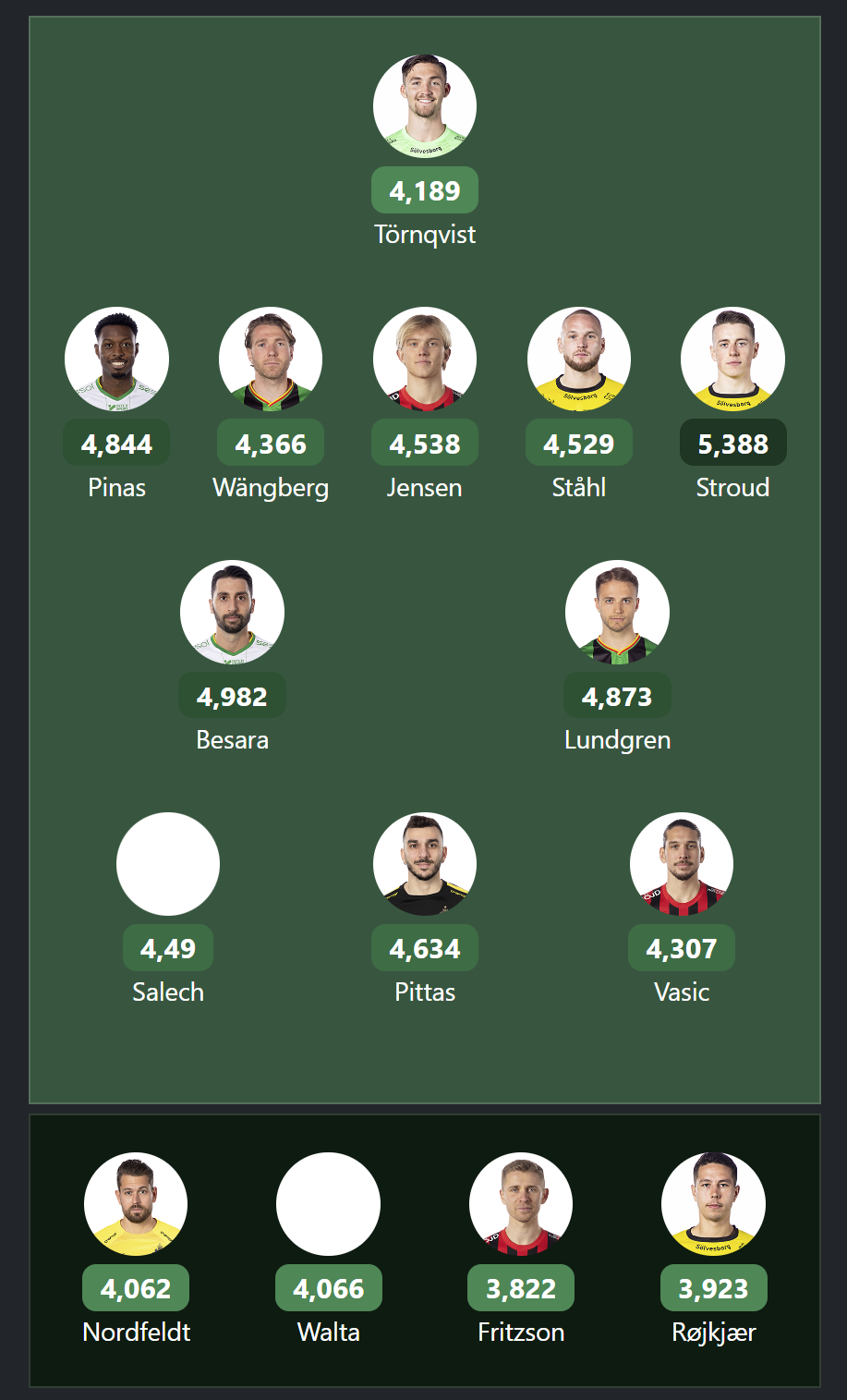Optimizing a Fantasy Football Squad with OR-Tools and .NET
Introduction
While building my fantasy football site xperty.se, I wanted to add a tool that automatically picks the best possible team within a set of strict constraints. This post walks through how I implemented an optimizer using C# and Google’s OR-Tools to create the optimal squad for fantasy football.

1. The Problem
Fantasy football isn’t just about picking your favorite players. You’re limited by:
- A budget cap
- A fixed number of players per position
- A max of 3 players per real-life team
I wanted to automate the selection process to find the team with the highest expected points while staying within these limits.
2. The Tools
- .NET (C#): For the core application logic
- Google OR-Tools: For solving the optimization problem
3. Modeling the Squad Selection as an Optimization Problem
We treat this as a Mixed Integer Linear Programming problem. Each player is represented by a boolean variable – either they’re in the squad or not.
🎯 Objective Function: Maximize Expected Points
objective.SetCoefficient(playerVars[player.Name], player.ExpectedPoints);
objective.SetMaximization();
💰 Constraint: Stay Under Budget
Constraint budgetConstraint = solver.MakeConstraint(0, (double)budget);
budgetConstraint.SetCoefficient(playerVars[player.Name], (double)player.Cost);
📌 Position Constraints
Constraint midfieldersConstraint = solver.MakeConstraint(5, 5);
midfieldersConstraint.SetCoefficient(playerVars[player.Name], 1);
🛑 Max 3 Players Per Team
Constraint teamConstraint = solver.MakeConstraint(0, 3);
teamConstraint.SetCoefficient(playerVars[player.Name], 1);
4. The Code
Here’s a more detailed version of the core logic:
public static class SquadSelector
{
// Define the team constraints
private const int MaxPlayersPerTeam = 3;
private const int NumGoalkeepers = 2;
private const int NumDefenders = 5;
private const int NumMidfielders = 5;
private const int NumForwards = 3;
public static FantasySquad OptimizeTeam(List<SquadPlayer> players)
{
var budget = 100M;
var selectedPlayers = new List<SquadPlayer>();
// Create the solver
var solver = Solver.CreateSolver("SCIP");
// Define the decision variables
Dictionary<string, Variable> playerVars = [];
foreach (var player in players)
{
playerVars[player.Name] = solver.MakeBoolVar(player.Name);
}
// Define the objective function
var objective = solver.Objective();
objective.SetMaximization();
foreach (var player in players)
{
objective.SetCoefficient(playerVars[player.Name], player.ExpectedPoints);
}
// Add the budget constraint
Constraint budgetConstraint = solver.MakeConstraint(0, (double)budget);
foreach (var player in players)
{
budgetConstraint.SetCoefficient(playerVars[player.Name], (double)player.Cost);
}
// Add the position constraints
Constraint goalkeepersConstraint = solver.MakeConstraint(NumGoalkeepers, NumGoalkeepers);
Constraint defendersConstraint = solver.MakeConstraint(NumDefenders, NumDefenders);
Constraint midfieldersConstraint = solver.MakeConstraint(NumMidfielders, NumMidfielders);
Constraint forwardsConstraint = solver.MakeConstraint(NumForwards, NumForwards);
foreach (var player in players)
{
if (player.PlayerType == 1)
{
goalkeepersConstraint.SetCoefficient(playerVars[player.Name], 1);
}
else if (player.PlayerType == 2)
{
defendersConstraint.SetCoefficient(playerVars[player.Name], 1);
}
else if (player.PlayerType == 3)
{
midfieldersConstraint.SetCoefficient(playerVars[player.Name], 1);
}
else if (player.PlayerType == 4)
{
forwardsConstraint.SetCoefficient(playerVars[player.Name], 1);
}
}
// Add the constraint for maximum players per team
var teams = players.Select(p => p.TeamId).Distinct();
foreach (var team in teams)
{
Constraint teamConstraint = solver.MakeConstraint(0, MaxPlayersPerTeam, $"MaxPlayersPerTeam_{team}");
foreach (var player in players.Where(p => p.TeamId == team))
{
teamConstraint.SetCoefficient(playerVars[player.Name], 1);
}
}
// Solve the problem
Solver.ResultStatus resultStatus = solver.Solve();
// Get the selected players
foreach (var player in players)
{
if (playerVars[player.Name].SolutionValue() > 0.5)
{
selectedPlayers.Add(player);
}
}
// Release resources
solver.Dispose();
...
}
5. Real-World Application on Xperty
This logic is now live and powers the auto-pick functionality on xperty.se. Users can click one button and get the best possible team based on latest projections – no manual tweaking required.

6. Key Takeaways
- Google OR-Tools is a powerful solver even in .NET environments.
- Modeling the problem correctly is more important than complex code.
- Optimization tools can bring real value to data-driven applications.
Feel free to reach out if you’re curious or building something similar!
✍️ Written by Viktor Nilsson, developer and fantasy football enthusiast.
📬 Follow me on LinkedIn for more .NET and football-related dev posts.